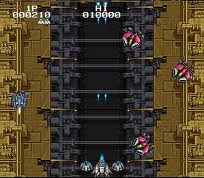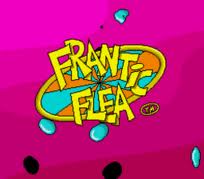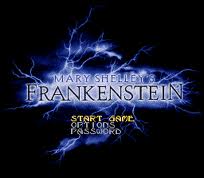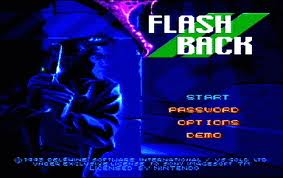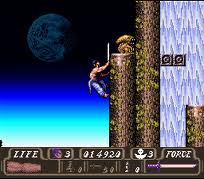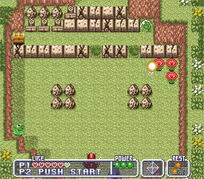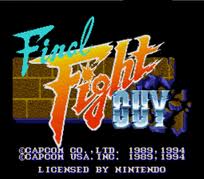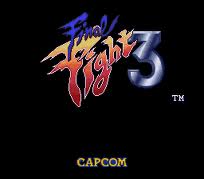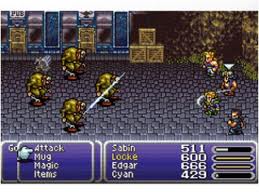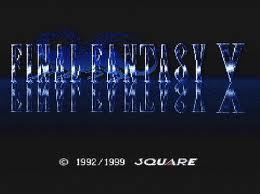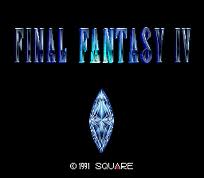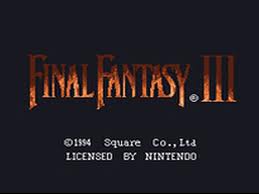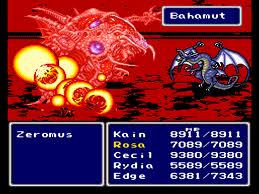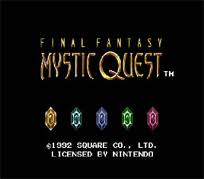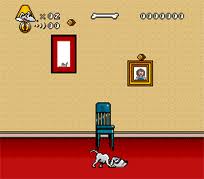Category: Adventure
576 game(s)All Adventure Games for SNES
Frantic Flea
Frantic Flea is a Super Nintendo Entertainment System video game that was released in April 1996.
Mary Shelley's Frankenstein
Mary Shelley's Frankenstein is a video game for multiple platforms that is based on the 1994 film of the same name. These systems include the Super Nintendo Entertainment System, the Sega CD and the Sega Genesis. The Sega CD version includes a bonus game: Bram Stoker's Dracula.
Flashback
Flashback, released as Flashback: The Quest for Identity in the United States, is a 1992 science fiction cinematic platform game developed by Delphine Software of France and published by U.S. Gold in United States and Europe, and Sunsoft in Japan.
The game was directed, written/designed and partially programmed by Paul Cuisset, who had previously created the adventure game Future Wars. Flashback was initially released for the Amiga in 1992, then ported to MS-DOS, Acorn Archimedes, Sega Mega Drive/Genesis and Super Nintendo in 1993. CD-ROM versions of Flashback for the Mega-CD, 3DO, CD-i, MS-DOS, Apple Macintosh and the FM Towns were released during 1994 and 1995, together with a cartridge version for the Atari Jaguar in 1995.
Originally advertised as a "CD-ROM game on a cartridge", the game features fully hand-drawn backdrops and all animation is rotoscoped, giving movements an unusual fluidity, similar to that of the earlier Prince of Persia. The capture technique of Flashback was invented independently of Prince of Persia, and used a more complicated method of first tracing video images onto transparencies.
The game was a commercial and critical success and was listed in the Guinness World Records as the best-selling French game of all time. It was followed by a sequel titled Fade to Black in 1995. In 2013, a Flashback remake by VectorCell was released for the PC and consoles.
First Samurai
The First Samurai is a platform game that involves the player on a quest as the first samurai in the history of ancient Japan to survive in a world of evil and rival swordsmen.
Firestriker
Firestriker (ホーリーストライカー?, lit. "Holy Striker") is an overhead view action video game that was released on December 17, 1993 in Japan and on October 1994 in North America exclusively for the Super Nintendo Entertainment System.
Final Fight Guy
Guy (ガイ Gai?) is a video game character who first appeared in the 1989 arcade beat-em-up Final Fight by Capcom. Guy, along with other Final Fight characters, has also been a recurring player character in the Street Fighter fighting game series since Street Fighter Alpha: Warriors' Dreams in 1995. Guy is a crimson-clad ninpō master of Japanese descent who has been taught the Bushin (武神 Warrior God?) form of ninjutsu. The kanji, 武神, written on Guy's top literally translates to "God of War".
In the original Final Fight he aides his friend Cody as well as Metro City Mayor Mike Haggar in rescuing Jessica, who is Haggar's daughter and Cody's girlfriend. Guy was excluded from the SNES version of the game, but a special version replacing Cody with Guy was also released. While he is not a playable character in the sequel Final Fight 2, Guy factors into the storyline as his girlfriend and her father are captured. Guy returned to the Final Fight series as selectable character in Final Fight 3. He also appears in Final Fight: Streetwise, but is not playable in the game's story mode. His sister-in-law is Maki Genryusai, who was introduced as one of the protagonists of Final Fight 2.
The character has been well received, often being named to various lists of top Street Fighter characters. His popularity with fans has resulted in Capcom adding him to many of its newer fighting games.
Final Fight 3
Final Fight 3, released in Japan as Final Fight Tough (Japanese: ファイナルファイト タフ?), is a side-scrolling beat 'em up by Capcom originally released for the Super Nintendo Entertainment System in 1995. It is the second sequel to Final Fight released for the Super NES, following Final Fight 2, and like its predecessor, it was produced by Capcom's consumer division with no preceding arcade version released.
The game features the return of Guy from the original Final Fight along with series mainstay Haggar and also introduces new characters Lucia and Dean. The game's plot takes them through their efforts to rid Metro City of the new Skull Cross gang. Final Fight 3 introduced new moves, as well as branching paths during gameplay and multiple endings. Also available is the option to fight alongside a CPU-controlled partner.
The next Final Fight game released, Final Fight Revenge, eschewed the traditional side-scrolling beat'em up gameplay in favor of a one-on-one 3D fighting game format.
Final Fantasy VI
Final Fantasy VI (ファイナルファンタジーVI Fainaru Fantajī Shikkusu?) is a role-playing video game developed and published by Square (now Square Enix), released in 1994 for the SNES as a part of the Final Fantasy series. Set in a fantasy world with a technology level equivalent to that of the Second Industrial Revolution, the game's story focuses on a group of rebels as they seek to overthrow an imperial dictatorship. The game features fourteen permanent playable characters, the most of any game in the main series.
It was ported by Tose with minor differences to Sony's PlayStation in 1999 and Nintendo's Game Boy Advance in 2006, and it was released for the Wii's Virtual Console in Japan in March 15, 2011, followed by the PAL region on March 18, 2011 and North America on June 30, 2011. The game was known as Final Fantasy III when it was first released in North America, as the original Final Fantasy III had not been released outside of Japan at the time. However, most later localizations used the original title. Final Fantasy VI was the first game in the series to be directed by someone other than producer and series creator Hironobu Sakaguchi; the role was filled instead by Yoshinori Kitase and Hiroyuki Ito. Yoshitaka Amano, a long-time contributor to the Final Fantasy series, returned as the image and character designer, while regular composer Nobuo Uematsu wrote the game's score, which has been released on several soundtrack albums.
Released to critical acclaim, Final Fantasy VI was a landmark title for the role-playing genre and is often considered one of the greatest video games of all time. Its Super Nintendo and PlayStation versions have sold over 3.48 million copies worldwide to date as a stand-alone game, as well as over 750,000 copies as part of the Japanese Final Fantasy Collection and the North American Final Fantasy Anthology. Final Fantasy VI has won numerous awards since its release.
Final Fantasy V
Final Fantasy V (ファイナルファンタジーV Fainaru Fantajī Faibu?) is a medieval-fantasy role-playing video game developed and published by Square (now Square Enix) in 1992 as a part of the Final Fantasy series. The game first appeared only in Japan on Nintendo's Super Famicom (known internationally as the Super Nintendo Entertainment System). It has been ported with minor differences to Sony's PlayStation and Nintendo's Game Boy Advance. An original video animation produced in 1994 called Final Fantasy: Legend of the Crystals serves as a sequel to the events depicted in the game. It was released for the PlayStation Network on April 6, 2011 in Japan. An enhanced port of the game, with new high resolution graphics and touch-based interface, was released for iPhone and iPad on March 28, 2013 with Android released on September 25, 2013.
The game begins as a wanderer named Bartz investigates a fallen meteor. There, he encounters several characters, one of whom reveals the danger facing the four Crystals that control the world's elements. These Crystals act as a seal on Exdeath, an evil sorcerer. Bartz and his party must keep the Crystals from being exploited by Exdeath's influence and prevent his resurgence.
Final Fantasy V has been praised for the freedom of customization that the player has over the characters, achieved through the greatly expanded Job System. Despite being released only in Japan, the Super Famicom version sold more than two million copies. The PlayStation version has earned "Greatest Hits" status, selling more than 350,000 copies.
Final Fantasy IV
Final Fantasy IV (ファイナルファンタジーIV Fainaru Fantajī Fō?) is a role-playing video game developed and published by Square (now Square Enix) in 1991 as a part of the Final Fantasy series. The game was originally released for the Super Famicom in Japan and has since been rereleased for many other platforms with varying modifications. The game was re-titled Final Fantasy II during its initial release outside of Japan as the original Final Fantasy II and Final Fantasy III had not been released outside of Japan at the time. However, later localizations used the original title.
The game's story follows Cecil, a dark knight, as he tries to prevent the sorcerer Golbez from seizing powerful crystals and destroying the world. He is joined on this quest by a frequently changing group of allies. Final Fantasy IV introduced innovations that became staples of the Final Fantasy series and role-playing games in general. Its "Active Time Battle" system was used in five subsequent Final Fantasy games, and unlike prior games in the series, IV gave each character their own unchangeable character class.
With its character-driven plot, use of new technologies and critically acclaimed score by Nobuo Uematsu, Final Fantasy IV is regarded as a landmark of the series and the role-playing genre. The various incarnations of the game have sold more than four million copies worldwide. An enhanced remake, also called Final Fantasy IV, with 3D graphics was released for the Nintendo DS in 2007 and 2008. A sequel, Final Fantasy IV: The After Years, was released for Japanese mobile phones in 2008, and worldwide via the Wii Shop Channel on June 1, 2009. In 2011, both Final Fantasy IV and The After Years were released for the PlayStation Portable as part of the compilation Final Fantasy IV: The Complete Collection, which also included a new game, set between the two; Final Fantasy IV: Interlude. An iOS port of the Nintendo DS remake was released on December 20, 2012, as well as an Android version on June 4, 2013.
Final Fantasy III
Final Fantasy III (ファイナルファンタジーIII Fainaru Fantajī Surī?) is a role-playing video game developed and published by Square in 1990 for the Family Computer as the third installment in the Final Fantasy series. It is the first numbered Final Fantasy game to feature the job-change system.
The story revolves around four orphaned youths drawn to a crystal of light. The crystal grants them some of its power, and instructs them to go forth and restore balance to the world. Not knowing what to make of the crystal's pronouncements, but nonetheless recognizing the importance of its words, the four inform their adoptive families of their mission and set out to explore and bring back balance to the world.
The game was originally released in Japan on April 27, 1990. It had never been released outside of Japan until a remake was released on the Nintendo DS on August 24, 2006. At that time, it was the only Final Fantasy game not previously released in North America or Europe. There had been earlier plans to remake the game for Bandai's WonderSwan Color handheld, as had been done with the first, second, and fourth installments of the series, but the game faced several delays and was eventually canceled after the premature cancellation of the platform. The Nintendo DS version of the game was positively received internationally, selling over one million copies in Japan.
It was also released for the many other systems: the Japanese Virtual Console version (Famicom version) on July 21, 2009 (Wii) and January 8, 2014 (Wii U), an iOS port of the Nintendo DS remake on March 24, 2011, an Android version on March 12, 2012, a PlayStation Portable version on late September 2012 (Downloadable only version outside of Japan via PlayStation Network) and Android-based Ouya console on April 11, 2013.
Final Fantasy 2
Final Fantasy Mystic Quest
Final Fantasy Mystic Quest, released as Mystic Quest Legend in PAL regions and as Final Fantasy USA: Mystic Quest (ファイナルファンタジーUSA ミスティッククエスト Fainaru Fantajī Yū Esu Ē Misutikku Kuesuto?) in Japan, is a role-playing video game for the Super Nintendo Entertainment System. The game was released as a spin-off to Square's popular Final Fantasy series of video games. Final Fantasy Mystic Quest was first released in North America in 1992 and marketed as a "simplified role-playing game...designed for the entry-level player"[1] in an attempt to broaden the genre's appeal.[2] The game's presentation and battle system is broadly similar to that of the main series, but it differed in its inclusion of action-adventure game elements. Along with Final Fantasy Adventure, Final Fantasy Mystic Quest was the first Final Fantasy game to be released in Europe.
In the game, the player controls a youth named Benjamin in his quest to save the world. His goal is to reclaim a set of stolen crystals that determine the state of the world's four elemental powers. The gameplay takes a departure from the main series in a variety of ways. Many series staples are eliminated, such as random battles, save points, manual equipment, and the party system. The game received middling reviews and sales in North America and Japan, citing its simplified gameplay and lack of depth in the game's story. Over time, the game has kept the reputation for being a "beginner's Final Fantasy", but has been praised for its music.
Family Dog
A TV Show was later turned into a Super Nintendo game about the life of an everyday family dog. The player has to go three places such as the home where the dog lives, a dog pound and the woods to defeat stereotypical obstacles and enemies like dog catchers and cats.
